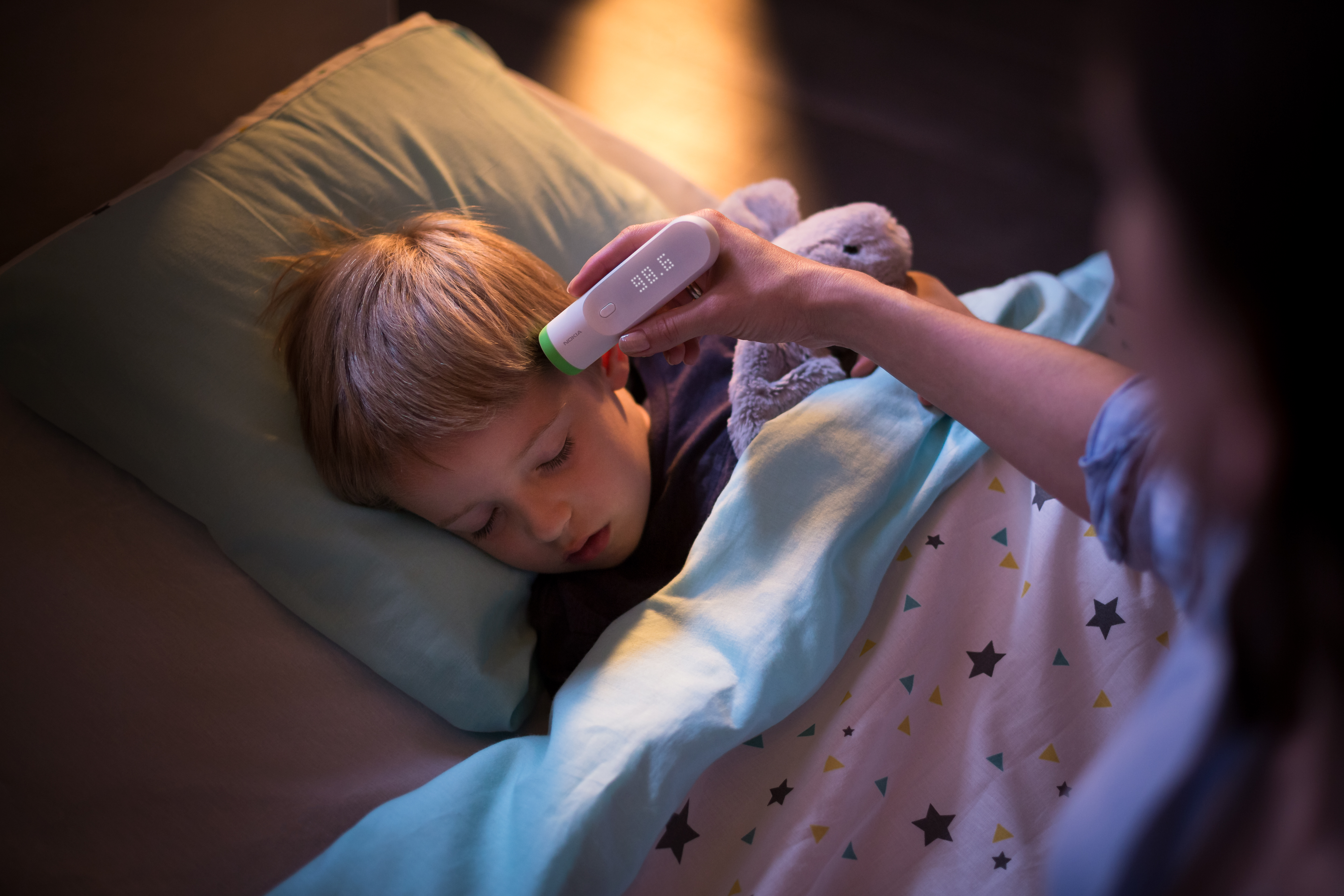
Chances are you’ve experienced a fever in your lifetime, but do you really understand what a fever is? Do you know when and how to treat it, especially in children? Read on to discover all the information you need to address a fever.
Fever is defined by the American Academy of Pediatrics as a central temperature above 100.4°F (38°C). While fever is one of the most common clinical symptoms in childhood, it is not a primary illness, but a physiological mechanism that can help the body fight infection. In fact, fever can slow the growth and reproduction of bacteria and viruses and enhance the body’s defense mechanisms.
Most of the time, a fever only lasts for a short time and is totally benign. Additionally, the degree of fever does not always correlate with the severity of illness.
Fever Causes
The main causes of fever are infections of various types.
- While viral infection is probably the most common cause of fever in infants and young children, the other cause is bacterial infection
- In general, the higher the fever, the more likely it is that the patient has an infection
Why Do People Feel Cold When They Have a Fever?
A normal body temperature is set by your internal thermostat at around 98.6°F (37°C), but when you have a fever, your body will increase this thermostat to bring the body’s temperature above that.
- This temperature increase is a fighting mechanism of the body to kill virus and bacterias
- Your body temperature is now below your internal thermostat temperature, so you feel cold
- The body then get chills to increase the temperature to that of the internal thermostat
- Chills are due to muscle contractions, which consume energy and produce heat, increasing temperature
The Most Reliable Sites to Take a Temperature
Though oral and auxillary temperature sites, such as the armpit, are more convenient to measure in children, they have more variability and are considered less reliable than rectal measurements.
- Tympanic and temporal artery temperatures are considered to be closer to core body temperature
When To Worry
Because fever is just one symptom, it isn’t enough to tell you how to respond. Age, severity and duration of fever, severity of other symptoms, and response to medication are other important parameters to take into account. Since fever varies by age, here are the specifics:
Age
- 0 to 3 months:
- Regardless of other symptoms, a temperature equal to or above 100.4°F (38°C) is an emergency
- 3 to 36 months:
- Mild Fever: 100.4°F (38°C) to 101.8°F (38.8°C) is not an emergency, and if well tolerated, may not need treatment.
- High Fever: 102°F (38.9°C) or above is considered an emergency because it could lead to dehydration and may be a sign of infection. Seek medical advice.
- Over 36 months:
- Mild Fever: 100.4°F (38°C) to 102.7°F (39.3°C) is not an emergency, and if well tolerated, may not need treatment.
- High Fever: 102.9°F (39.4°C) or above is considered an emergency because it could lead to dehydration and may be a sign of infection. Seek medical advice.
Fever Duration
- If child is under 2 years old, seek medical advice if the fever lasts for more than 2 days
- If child is over 2 years old, seek medical advice if the fever lasts for more than 3 days
Serious Symptoms
Even if the child has a normal temperature, seek medical advice if your child:
- Refuses to eat or drink or has difficulty waking up
- Has severe headaches or neck stiffness
- Is dehydrated (dry mucous membranes, decreased urinary frequency…)
- Has a stomachache or diarrhea
- Has difficulty breathing
Response to Medication
Seek medical advice if the fever continues despite medication intake.
Fever Treatment
The primary goal of treating a fever should be to improve the patient’s overall comfort rather than to normalize body temperature.
- For children, pediatricians recommend antipyretic treatment to lower a temperature higher than 100.9°F (38.3°C) and to improve the child’s overall comfort.
- Pharmacological treatment: Acetaminophen or ibuprofen => decrease of temperature in 30-60 minutes in 80% of children
- Non-pharmacological treatment: Drink water or cold drinks as much as possible, breathe fresh air, don’t cover the child too much with blankets or clothing, and don’t overheat the room.
- Potential benefits of fever reduction include relief of patient discomfort and reduction of insensible water loss, which may decrease the occurrence of dehydration.
Now that you’re armed with the right information, you should be well-prepared next time a fever hits.



